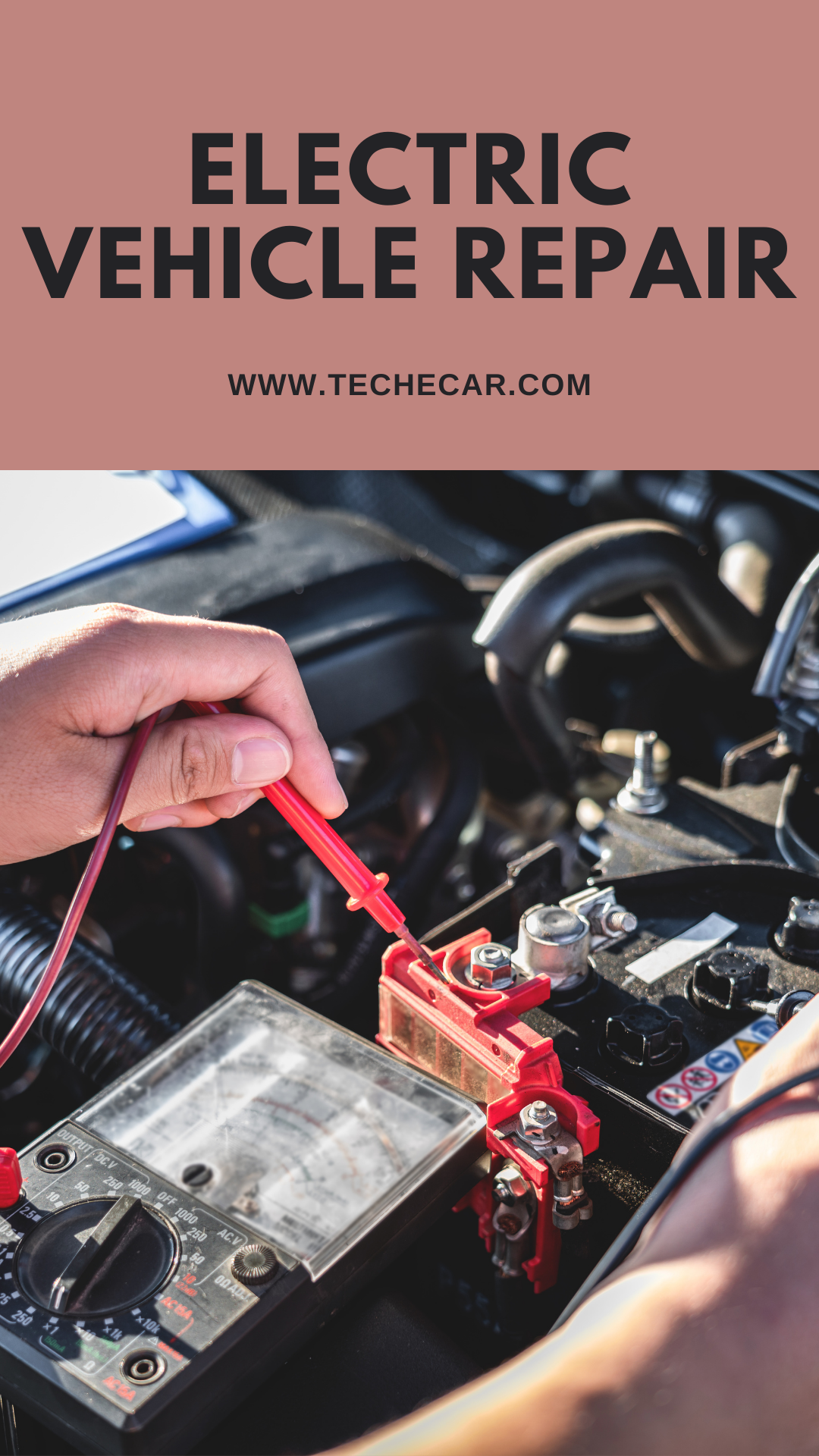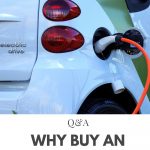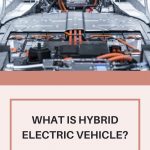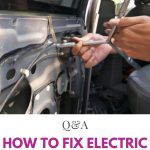Electric Vehicle Repair
Topic: Electric Vehicle Repair


Electric Vehicle Repair
Each year, automobile manufacturers introduce more cutting-edge technology into their automobiles. As a result, body shops are obliged to adapt to an ever-changing environment to continue providing auto body repair services.
These adjustments include employee training, the acquisition of new equipment, and the attainment of relevant certifications. These recent changes have increased the cost of fixing automotive damage on modern vehicles. According to Fixico’s research, the average maintenance price for one-year-old automobiles increased by 29% between 2016 and 2019.
Additionally, electrification has been a developing trend in the automobile industry, and the rapid rate of change is unlikely to cease very soon. As electric vehicles (EVs) gain popularity due to their low energy usage and inexpensive cost, the complexity of repairing them will also rise.
Newer EV models are known to provide new degrees of complexity, which frequently results in increased repair prices and repair length. When attempting to minimise maintenance expenses, a few factors to keep in mind.
Why is it more challenging to fix electric vehicles?
Reason 1: Precautions required while working with a high-voltage battery
Most electric cars are powered by lithium-ion battery packs, which are costly to replace and require additional precautions to be handled securely. If repairers are not educated to work on EVs, they risk damaging the battery and jeopardising their safety.
As a result, repairers must undergo specialised training and get certificates to work on EVs. Because not all body shops have the skills or resources necessary to do EV repairs, the process of locating a suitable repairer has become more challenging.
Even if the battery is not physically damaged, the body shop must pay particular attention to it. It may be necessary to remove it from the car or unplug it from the system in some instances.
For instance, if the entire vehicle requires repainting, the battery pack must be entirely removed. Typically, the car is put beneath large heat lamps to dry the spray paint. If the battery remains inside, the lights may produce excessive heat and shorten the battery’s life.
Due to the high-risk batteries and advanced components that complicate EV maintenance, the cost of repairs automatically increases. Additionally, safety precautions tend to prolong the duration of repairs, resulting in higher cycle times and vehicle downtime.
Reason 2: Increased ADAS usage
As automobile manufacturers innovate, Advanced Driver Assistance Systems (ADAS) also change. ADAS improves road safety and assists drivers with parallel parking and lane alignment activities.
However, they increase the expense of repairs. EVs frequently have a variety of ADAS, and body shops must now acquire the requisite equipment, facilities, training, and abilities to repair or replace ADAS-equipped components.
Sensors for the advanced driver assistance systems can be stored in car areas that are quickly struck during a collision, such as the bumper, side mirrors, windshield, tyre, and wheels. As a result, calibrating ADAS to guarantee they continue to function properly has become an integral aspect of fixing EVs.
It extends the repair time and needs calibrating skills, which results in additional hours charged to the repairer. According to Fixico’s research, calibration can take up to two hours longer and be 40% more expensive than non-ADAS repairs, depending on the item and ADAS.
Reason number three: The use of lightweight materials
Numerous electric cars are constructed using various (usually lightweight and costly) components. This is for energy efficiency reasons: the lighter the vehicle, the less energy and fuel it needs to accelerate.
The other reason for the rising use of lightweight materials is that manufacturers must adhere to tight European CO2 emission regulations for new automobiles.
Historically, automobile makers employed iron or steel metal to construct their automobiles. Previously, repairers could beat out a dent or apply high heat to a steel-bodied vehicle and call it a day. Now, using excessive heat on the panel might easily damage its form.
Additionally, the use of lightweight materials results in creating so-called ‘crumple zones.’ Each vehicle has a crumple zone – a region that absorbs the majority of the impact during a collision, boosting the occupants’ safety.
Composite materials (aluminium, magnesium, and steel mixes) absorb energy more efficiently than solid steel, which is why automobile makers employ them more frequently.
However, when power is absorbed more efficiently during the contact, the magnitude of the damage increases as well. It is uncommon for panels to need to be replaced after an accident, resulting in increased repair expenses.
How to minimise the cost of electric car maintenance
To minimise expenses and to understand what to expect during the repair process, here are a few pointers on how to approach the search for a competent body shop that specialises in repairing electric vehicles:
Choose the body shop that is most suited for the work.
- Before locating the best repairer for the work, it is critical to understand your vehicle’s particular requirements. Each automobile is unique. Significant distinctions already exist between the battery, plug-in hybrid, and hybrid electric vehicles within electric cars.
- Additionally, OEM certifications play a role; as you can understand, repairing a Tesla or Nissan EV demands a different strategy.
- Directly contacting a repairer with the appropriate certifications, skill in dealing with the vehicle’s ADAS, and familiarity with the requisite lightweight materials considerably reduces the possibility of incurring more significant expenditures.
- The ideal body shop will be skilled and equipped to securely remove (or disable) the battery and calibrate the ADAS.
- Additionally, recognising the specialist in the areas above will result in shorter repair times and prevent the repair from being assigned to a shop that must rely on outsourcing to complete the task.
- However, determining which store matches all of the necessary standards for each unique instance of damage sounds like an enormous amount of effort. Fortunately, there are methods for streamlining this procedure.
Streamline your search
- Adopting digitisation will be simpler to find the correct repairer for electric car maintenance, and prices may be significantly lowered.
- Fixico enables fleet and claim managers to pick the ideal body repair shop for their EV repairs while also taking other parameters into accounts, such as availability or overall length.
- The end-to-end platform ensures that each repair is handled optimally while also revealing unique insights, shorter cycle times, and competitive pricing.
Electric Vehicle Repair
Electric vehicles’ high-voltage batteries affect their repairability. It is critical to handle the car safely when restoring the body and paint. It is always crucial to follow established methods while repairing a vehicle to ensure its safety and efficiency.
It is much more vital to do so in the case of an electric automobile from a workplace security standpoint.
This was demonstrated at a recent presentation by the Centro Zaragoza (an institute for auto repair research comprised of 80 per cent of Spanish insurance firms) to a group of bodywork businesses. A variety of recommendations for working on this sort of vehicle were discussed during this conference.
Centro Zaragoza’s presentation on best practices for repairing an electric automobile, led by engineer Miguel del Castillo, focused mainly on the precautions bodywork and paint workers must take while dealing with this type of vehicle:
Disconnect the power supply. This step is essential to operate with the high voltage battery safely.
- Utilize the proper oil. These automobiles are equipped with high-voltage air conditioning compressors. These compressors must be run on high-quality oil since low-quality oils will clog the system and cause it to shut down.
- Avoid overheating the batteries, which should not exceed 60oC. When completing a paint job, it is critical to ensure that the batteries do not exceed that temperature.
- Before beginning work on the car, check the voltage. It is suggested to wait approximately ten minutes after the vehicle has been turned off before working on it. Additionally, it is required to verify with the multi meter if the voltage is zero.
- Make necessary adjustments to the connections. The manufacturer’s requirements must make high voltage connections. Any unsecured cable might result in an accident or even fire the car.
- Recognize cables. Never cut a wire without first ascertaining its identity. The cable system used by various automobile manufacturers may differ. Lines carrying high voltage are often orange, whereas those having 36 to 42 volts are blue. SOURCE
People Also Ask:
Electric vehicle repair costs?
According to the poll, the average maintenance cost for an EV in its first three years is $77 – much less than the $228 average for gas cars.
Electric vehicle repair equipment?
The box, wire, and socket that attach to the wall of your home and provide energy to your car are technically referred to as Electric Vehicle Service Equipment, or EVSE (though virtually everyone refers to it as a ‘charger’).
Electric vehicle repair safety?
The primary hazards associated with hybrid and electric vehicle maintenance are electrocution and the potential of the automobile turning on accidentally during labour. These grave dangers underscore the importance of safety training.
Are electric vehicles easier to repair?
“With no oil to replace, no engine to control, and fewer wearable components, electric automobiles are more cost-effective and easier to maintain than internal combustion engine vehicles.”
Are electric vehicles expensive to repair?
Because electric vehicles have fewer moving components, they are often less expensive to repair and maintain than conventional automobiles.
Electric car service intervals?
In most situations, EVs can last two years without needing servicing. Following this, service is typically performed twice a year. However, this may vary significantly depending on the manufacturer.
Recommended Articles:
How Long Does It Take To Charge A Tesla?
Electric Van That Could Use Solar Panels
Tesla Autopilot with Convenience Features






[…] Electric Vehicle Repair […]
[…] Electric Vehicle Repair […]
[…] Electric Vehicle Repair […]
[…] Electric Vehicle Parking Only Sign Electric Vehicle Repair […]
[…] Auto Body is a leading collision repair shop in Hayward, California. We specialise in high-end vehicle repair, but we can handle anything from minor collisions to significant unibody and frame […]